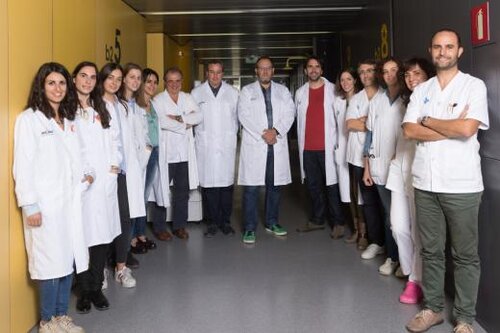IRBLleida researchers discovered a new metabolic profile related to ischemic brain lesions
The discovery allows the development of biomarkers for diagnosis and prognosis of transient ischemic attack (TIA)
Lleida, November 18th, 2016
The Clinical Neuroscience group led by Dr. Francesc Purroy and the Pathophysiology Metabolic group led by Dr. Manel Portero-Otín and Dr. Reinald Pamplona, both groups from IRBLleida, just published a paper in EBiomedicine journal, supported by CellPress and The Lancet. The publication is focused on the new specific metabolomic profile that we have found that is related to acute ischemic lesions, volume and specific acute ischemic paterns.
Neuroimaging is essential for the diagnosis and prognosis of transient ischemic attack (TIA). The discovery of a plasmatic biomarker related to neuroimaging findings is of enormous interest because, despite its relevance, magnetic resonance diffusion weighted imaging (DWI) is not always available in all hospitals that attend to TIA patients.
In this study we analyzed two cohorts of patients with TIA from HUAV, 129 patients in the original cohort and 152 patients in the validation cohort. The result has been the discovery of 11 molecules that allow us to identify those patients with DWI alterations. In addition, 7 are correlated with the volume of ischemic injury and 8 with DWI lesion patterns. These molecules common and significant in both study cohorts include creatinine, lysophosphatidylcholines and lysophospholipids. These molecules are potential biomarkers with clinical relevance.
This work has been supported by the Goverment of Catalonia-Agència de Gestió d’Ajuts Universitaris i de Recerca [2009SGR-735 and 2014SGR-1418], the Spanish Ministry of Health [FIS 11–02,033,14–001,115 and 14–00,328] and the Marató of TV3 foundation [95/C/2011]. It was also supported by the European Regional Development Fund “A way to build Europe”.







